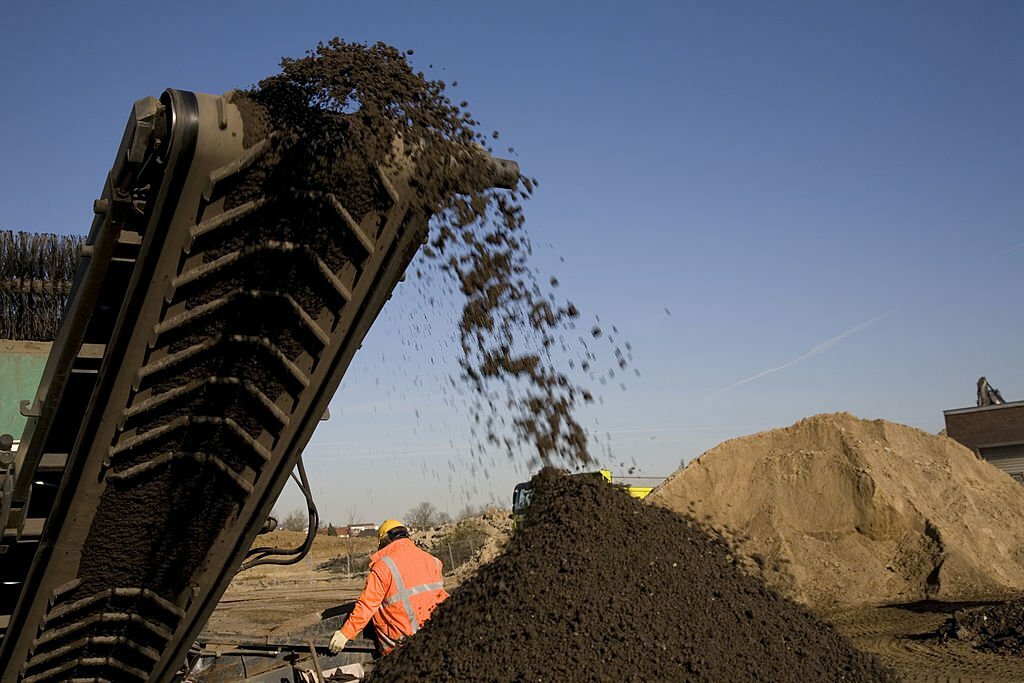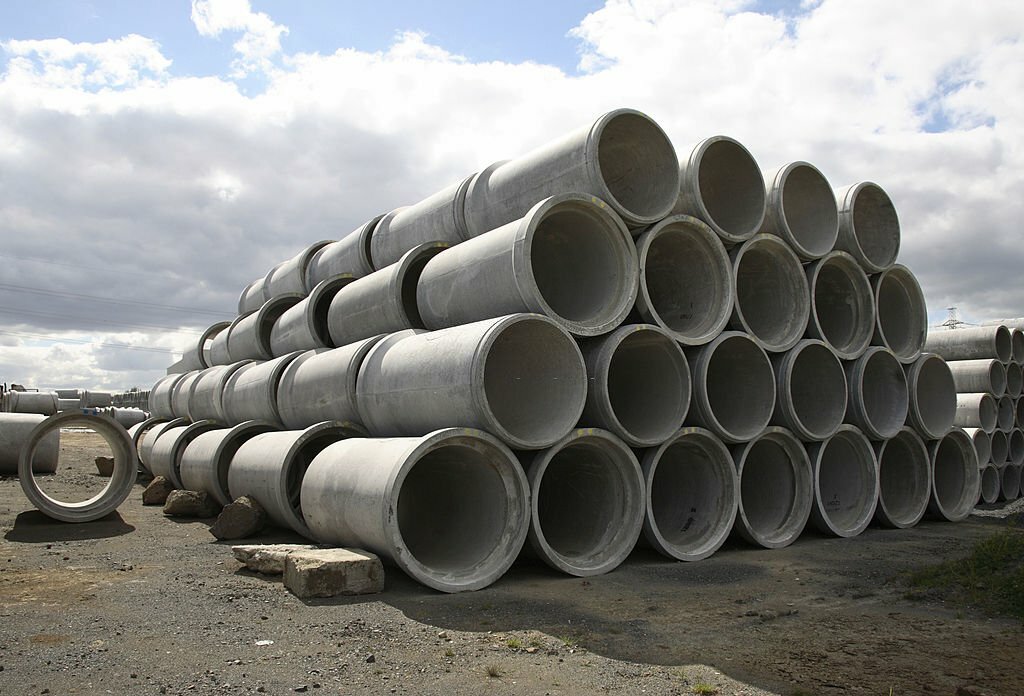The world of heavy machinery hinges on the efficiency and precision of the crushing and screening process. This fundamental procedure is a linchpin in a wide array of industries, including construction, mining, and quarrying. Understanding the intricacies of this process is essential to comprehend how raw materials are transformed into the building blocks of modern infrastructure and various applications.
In this article, we embark on a journey through the different stages that constitute the crushing and screening process. From the initial feeding of raw materials into the machinery to the critical phases of crushing and screening, we will delve into the specific roles each stage plays. This exploration will unveil how machinery breaks down materials, classifies them, and prepares them for a multitude of end uses.
The stages of the crushing and screening process are integral not only in shaping the materials but also in shaping industries, allowing them to fulfill their requirements and ambitions. Let’s venture deeper into this pivotal process to unravel its significance in the industrial world.
Feeding

The journey through the stages of the crushing and screening process commences with the critical act of feeding raw materials into the crusher or screener. This initial phase is far from a mundane task; it sets the foundation for the entire process. The precision involved in this stage is paramount, as it determines the efficiency and effectiveness of subsequent operations.
A consistent and controlled flow of raw materials is essential to prevent overloading of the equipment and ensure an even distribution. This is not merely about pouring materials into the machinery but about orchestrating a symphony of sorts, where the tempo must be precisely maintained. Overloading can lead to equipment wear and tear, reduced operational efficiency, and even unplanned downtime, while uneven distribution can result in inconsistent product quality.
Hence, the feeding stage is where the art of balancing the input meets the science of maintaining operational integrity. It lays the groundwork for the crushing and screening phases that follow, emphasizing the critical role of precision and control in the entire process.
Crushing

The journey through the crushing and screening process advances to the pivotal crushing stage, where the transformation of raw materials takes center stage. In this phase, substantial rocks, ores, or aggregates are subjected to formidable forces, reducing them to smaller, more manageable sizes.
Crushers, the workhorses of this stage, employ various mechanisms to achieve this formidable task. These mechanisms may include compression, impact, or attrition. The selection of the appropriate crusher type depends on the nature of the material being processed and the desired end product.
For instance, compression crushers exert gradual, continuous pressure, which is particularly effective for hard and abrasive materials. Impact crushers, on the other hand, deliver a powerful blow to break materials, making them suitable for softer or medium-hard substances. Attrition crushers utilize a combination of friction and impact to reduce materials, often used for friable materials.
Choosing the right crusher type is a crucial decision, as it directly impacts the quality and characteristics of the final product. Thus, the crushing stage plays an integral role in the overall process, contributing to product quality and suitability for various applications.
Screening

Following the crushing phase, the next crucial stage in the crushing and screening process is screening. This is the stage where the now fragmented material is meticulously separated into a spectrum of different sizes. The objective here is to ensure that the final product aligns precisely with the specified requirements and desired specifications.
Screens equipped with various mesh sizes play an indispensable role in this endeavor. These screens act as filters, allowing only particles of certain dimensions to pass through. The choice of the appropriate mesh size is directly determined by the desired end product. For instance, in construction, finely graded aggregates are often required, while larger-sized materials may be necessary for certain industrial applications.
The screening process is pivotal, as it helps guarantee the quality, uniformity, and precision of the final product. By meticulously segregating the materials into distinct categories, industries can ensure that the product conforms to the exact standards, whether it’s for concrete mixtures, asphalt production, or any other application where material size consistency is paramount.
Conveying

Conveyors are the unsung heroes of the crushing and screening process, playing a pivotal role in the seamless movement of materials between various stages. These mechanical workhorses are instrumental in maintaining the continuity and efficiency of the entire process.
Conveyors ensure a consistent and uninterrupted flow of materials, reducing the risk of downtime, bottlenecks, and material pile-ups. By seamlessly transferring materials from the feeding stage to crushing, screening, and beyond, conveyors help optimize the overall productivity of the operation.
The selection and design of conveyors are highly tailored to the specific needs of each operation, accounting for factors such as the type of material, its volume, and the distances involved. Whether it’s steep inclines, sharp turns, or long distances, conveyors are engineered to meet these challenges while maintaining efficiency.
In summary, conveyors are the unsung heroes that keep the crushing and screening process moving smoothly. Their ability to maintain a continuous flow of materials between stages is essential for ensuring the overall efficiency and productivity of the entire operation.
Washing (Optional)

In certain applications within the crushing and screening process, an additional stage of material washing becomes imperative. This step serves several essential purposes, ranging from purging materials of impurities to ensuring that the final product aligns with specific quality standards.
The washing stage is particularly relevant when dealing with raw materials that may be contaminated with foreign substances, such as dirt, clay, or other unwanted particulates. By subjecting the material to washing, these impurities are effectively removed, leading to a cleaner and purer end product.
Moreover, washing is also a necessity in scenarios where materials must meet stringent quality standards, such as those required for concrete or asphalt production. It helps ensure that the materials are thoroughly cleaned, graded, and separated according to size, guaranteeing that the end product complies with the specified criteria.
In essence, the washing stage is a versatile tool within the crushing and screening process, offering industries the capability to enhance the purity and quality of their materials, thus enabling them to produce end products that meet exacting standards.
Stockpiling

Upon completion of the intricate stages in the crushing and screening process, the resulting final products undergo a pivotal transition to the stockpiling phase. This is where the meticulously processed materials are stored and organized, ready for either immediate use or transportation to their intended destinations.
Stockpiling serves a multifaceted purpose, contributing to the efficiency and fluidity of operations. It ensures that materials are readily available when required, minimizing downtime and maintaining a continuous workflow. For industries like construction and mining, where timely access to specific materials is essential, stockpiling is a strategic necessity.
Furthermore, stockpiling enables the segregation of different materials into distinct piles, facilitating inventory management and ensuring that the right material is available for specific applications. This organization streamlines operations and safeguards product quality by preventing intermingling.
In conclusion, the stockpiling stage is the final link in the chain, guaranteeing the availability, organization, and accessibility of materials, thereby underlining the significance of this phase in ensuring the smooth and efficient functioning of the entire crushing and screening process.
The crushing and screening process is a multi-faceted journey that transforms raw materials into valuable end products, serving as the backbone of various industries. From precise feeding to the meticulous separation of materials into different sizes, this process is marked by its meticulousness and efficiency. Conveyors keep the materials moving, and in some applications, washing removes impurities. The ultimate destination is stockpiling, where products are organized for storage or transportation. This exploration of the stages in the crushing and screening process underscores the remarkable intricacies and precision required, ultimately shaping the raw materials into versatile and valuable resources, essential for countless applications across industries.
Discover the intricate stages of the Crushing and Screening Process at its best. For a deeper exploration, visit our website at Boom and Bucket. Delve into the precise art of breaking down and classifying raw materials, unraveling the essential stages that drive industries. Don’t miss the opportunity to gain in-depth insights into the heart of heavy machinery and its pivotal role in shaping our modern world. Explore more at Boom and Bucket today!

